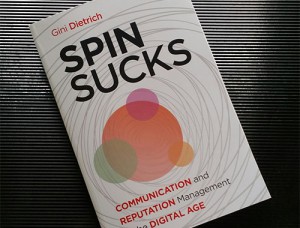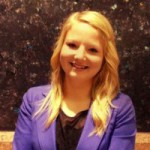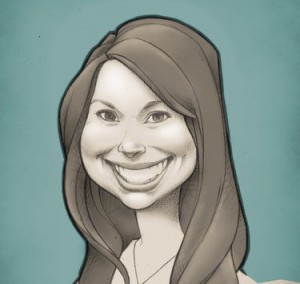This post is part of The Edge monthly series of book reviews on books relevant to new PR professionals.
The wise Ricky Bobby once told us: “If you’re not first, you’re last.”
 Well, after reading “Spin Sucks,” it’s obvious that Hollywood’s favorite NASCAR driver has never met industry thought leader Gini Dietrich. In “Spin Sucks,” Gini examines the evolving communications world, and shares actionable insights to help PR pros of all ages adapt to the changing industry both successfully and ethically.
Well, after reading “Spin Sucks,” it’s obvious that Hollywood’s favorite NASCAR driver has never met industry thought leader Gini Dietrich. In “Spin Sucks,” Gini examines the evolving communications world, and shares actionable insights to help PR pros of all ages adapt to the changing industry both successfully and ethically.
Unlike Ricky, Gini says a quality communications plan is a marathon, not a sprint. If you’re cutting corners, vying for first – not best – even a full dish of fancy sauce can’t help you succeed.
But, follow “Spin Sucks’” fancy-sauce recipe for success, and you’ll get positive feedback from reporters, customers and, most importantly, company leadership.
Prepare your paid, earned, owned and shared media.
Curious how the four PR silos can work in tandem? In “Spin Sucks,” Gini explains how DirecTV used each avenue to execute its successful “Football on Your Phone” campaign.
“They used paid (because it cost them to produce it), owned media (it’s embedded both on their website and YouTube channel), and shared media [through social sharing] for this campaign, and earned media was the result,” she writes.
Add a cupful of content marketing.
Sure, it’s a buzz term now, but in a few years content marketing will be a successful PR pro’s bread and butter.
Think about it. You own this content. It has your brand’s messaging and voice with no third-party filter. And, as Gini notes, once you distribute content through social and email networks, you’ll conveniently (and strategically) bring the audience back to your website.
Not sure where to start? Gini has you covered. She suggests:
– Subscribing to SmartBrief and Talkwalker Alerts for industry news,
– Reading blog comments to get story ideas from readers’ questions, and
– Looking through your sent emails to uncover recurring topics you’ve discussed with customers. (This tip from Andy Crestodina.)
Sprinkle in some SEO.
When it comes to content marketing, if you build it, they probably won’t come. But, if you build then optimize it, they’ll slowly start to find you.
As new PR pros, you’re likely seeing SEO quickly becoming a necessary skill. Here’s how Gini suggests getting in the SEO know:
– Keep blog posts between 500 – 700 words with five or six keyword mentions,
– Your keyword or phrase should be in the post URL (here’s how to change it), and
– Always use an image and copy your headline into the “alt text” section.
Mix in your media relations.
Yes, SEO is an important skill for new professionals, but don’t forget the PR pro’s mainstay: media relations.
As Gini notes, the best media relations starts with storytelling, relationship building, patience and time. She also suggests:
– Reading the outlets and reporters you’re contacting before drafting the pitch, then tailoring it to their niche.
– Commenting intelligently on your target reporter’s articles to build your credibility as a source.
– Writing short emails. For some reporters, you may even consider a handwritten note to break through the clutter.
Technically speaking, Ricky Bobby could be right. If you’re not first, you could end up last. But, as “Spin Sucks” illustrates, speed doesn’t always equal the best batch of fancy sauce.
Conversely, if you train for the marathon – not sprint – your company’s content will be read, news will be reported and goals will be met.
I’ve only skimmed the surface of the PR lessons offered in “Spin Sucks.” Whether you’re a new or seasoned pro, I’d highly recommend this book.
Have you read “Spin Sucks”? What industry insights did you glean from it?
 Stephanie Vermillion is a senior account executive at Wordsworth Communications, a public relations agency in Cincinnati. She is on the PRSA Cincinnati Leadership Team and is part of the PRSA Cincinnati New Pros Committee. Connect with Stephanie on LinkedIn and Twitter (@SMVermillion).
Stephanie Vermillion is a senior account executive at Wordsworth Communications, a public relations agency in Cincinnati. She is on the PRSA Cincinnati Leadership Team and is part of the PRSA Cincinnati New Pros Committee. Connect with Stephanie on LinkedIn and Twitter (@SMVermillion).

 1. Work pro bono
1. Work pro bono Samantha Owens is a writer, hobbyist photographer, and grammar enthusiast based in Napa Valley, CA. She writes her own blog, contributes at a literary fiction book blog, and freelance writing work. Find out more about her at about.me/seowens or follow her on Twitter at
Samantha Owens is a writer, hobbyist photographer, and grammar enthusiast based in Napa Valley, CA. She writes her own blog, contributes at a literary fiction book blog, and freelance writing work. Find out more about her at about.me/seowens or follow her on Twitter at 

 Helma von Zadow works with the Brand and Integrated Marketing team at Major League Soccer and is a member of the PRSA New York Chapter. She served on the 2013-2014 PRSSA National Committee as vice president of professional development. Connect with her on
Helma von Zadow works with the Brand and Integrated Marketing team at Major League Soccer and is a member of the PRSA New York Chapter. She served on the 2013-2014 PRSSA National Committee as vice president of professional development. Connect with her on
